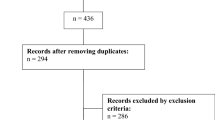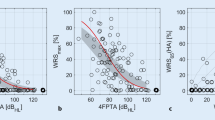Abstract
Data mining (DM) is a technique used to discover pattern and knowledge from a big amount of data. It uses artificial intelligence, automatic learning, statistics, databases, etc. In this study, DM was successfully used as a predictive tool to assess disyllabic speech test performance in bilateral implanted patients with a success rate above 90 %. 60 bilateral sequentially implanted adult patients were included in the study. The DM algorithms developed found correlations between unilateral medical records and Audiological test results and bilateral performance by establishing relevant variables based on two DM techniques: the classifier and the estimation. The nearest neighbor algorithm was implemented in the first case, and the linear regression in the second. The results showed that patients with unilateral disyllabic test results below 70 % benefited the most from a bilateral implantation. Finally, it was observed that its benefits decrease as the inter-implant time increases.




Similar content being viewed by others
References
Bakar AA, Othman Z, Ismail R, Zakari Z (2009) Using rough set theory for mining the level of hearing loss diagnosis knowledge. International conference on electrical engineering and informatics
Banks D, House L, McMorris FR, Arabie P, Gaul W (2004) Classification, clustering and data mining applications. Duke University. Springer
Gatehouse S (1999) Glasgow Hearing Aid Benefit Profile: Derivation and validation of a client-centered outcome measure for hearing-aid services. J Am Acad Audiol 10:80–103
Hall M, Frank E, Holmes G, Pfahringer B, Reutemann P, Witten IH (2009) The WEKA Data Mining Software: an update. SIGKDD explorations, vol 11, issue 1
Han J, Kamber M (2001) Data mining: concepts and techniques. Morgan Kaufmann, San Francisco
Kilgard MP, Pandya PK, Vazquez J, Gehi A, Schreiner CE, Merzenich MM (2001) Sensory input directs spatial and temporal plasticity in primary auditory cortex. J Neurophysiol 86:326–338
Kim L, Jang YS, Choi A, Ahn S, Park J, Lee Y, Jeong S (2009) Bilateral cochlear implants in children. Cochlear Implants Int 10:74–77
Montes-Jovellar L, Guillen-Grima F, Perez-Fernandez N (2011) Cluster analysis of auditory and vestibular test results in definite Menière’s disease. Laryngoscope 121:1810–1817
Ramos de Miguel A, Perez Zaballos MT, Ramos A (2014) LifeQuestionnaire. http://www.lifequestionnaire.com
van Hoesel RJM (2004) Exploring the benefits of bilateral cochlear implants. Audiol Neurotol 9:234–246
Robertson D, Irvine DRF (1989) Plasticity of frequency organization in auditory cortex of guinea pigs with partial unilateral deafness. J Comp Neurol 282:456–471
Rubinstein JT, Parkinson WS, Tyler RS, Gantz BJ (1999) Residual speech recognition and cochlear implant performance: effects of implantation criteria. Am J Otol 20:445–452
Steffens Y, Lesinski-Schiedat A, Strutz J, Aschendorff A, Klenzner T, Rühl S, Voss B, Wesarg T, Laszig R, Lenarz T (2008) The benefits of sequential bilateral cochlear implantation for hearing-impaired children. Acta Oto-Laryngol 128(2):164–176
Zwolan TA, O’Sullivan MB, Fink NE, Niparko JK, The CDACI Investigative Team (2008) Electric charge requirements of pediatric cochlear implant recipients enrolled in the childhood development after cochlear implantation study. Otol Neurotol 29:143–148
Author information
Authors and Affiliations
Corresponding author
Rights and permissions
About this article
Cite this article
Ramos-Miguel, A., Perez-Zaballos, T., Perez, D. et al. Use of data mining to predict significant factors and benefits of bilateral cochlear implantation. Eur Arch Otorhinolaryngol 272, 3157–3162 (2015). https://doi.org/10.1007/s00405-014-3337-3
Received:
Accepted:
Published:
Issue Date:
DOI: https://doi.org/10.1007/s00405-014-3337-3




